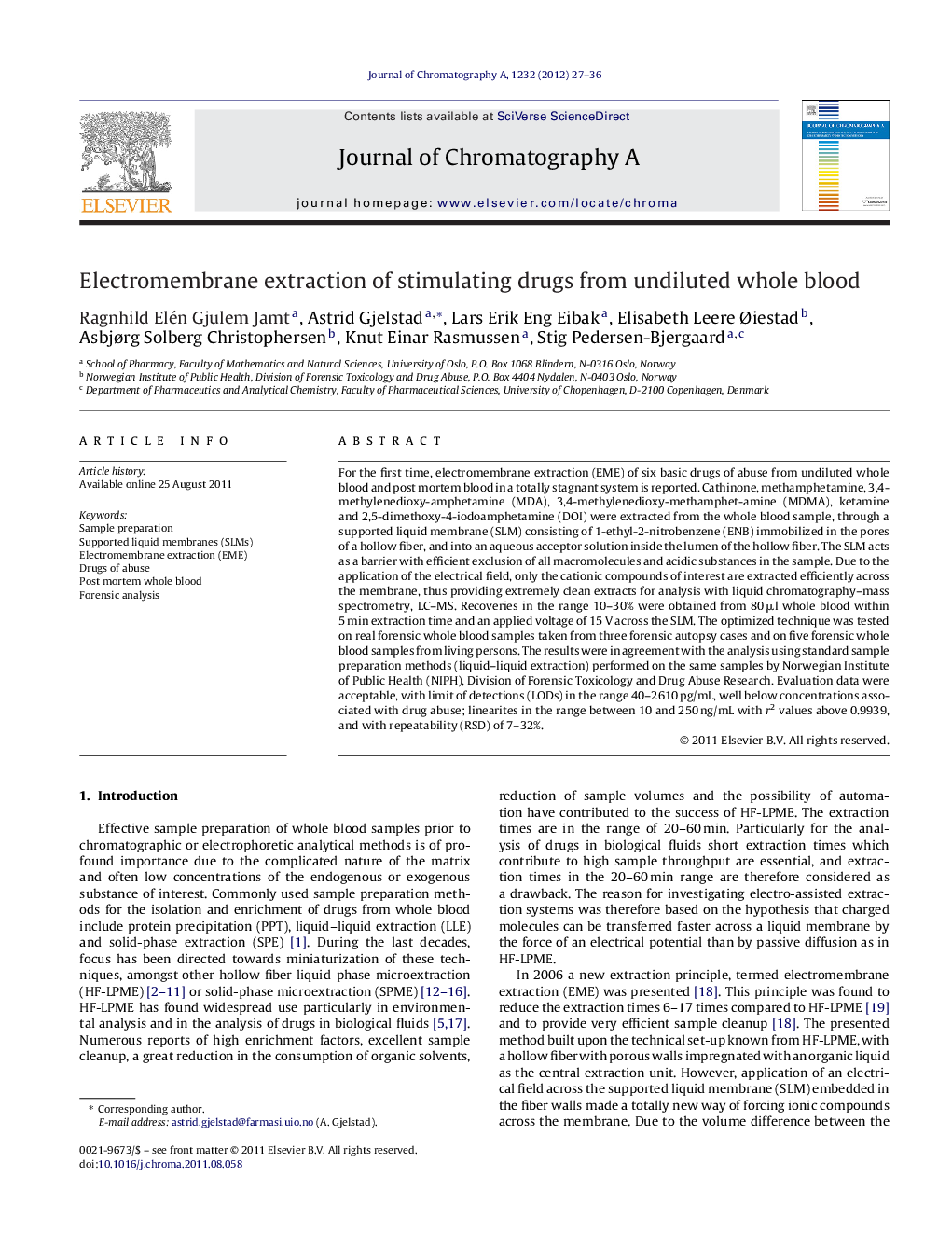| Article ID | Journal | Published Year | Pages | File Type |
|---|---|---|---|---|
| 1202715 | Journal of Chromatography A | 2012 | 10 Pages |
For the first time, electromembrane extraction (EME) of six basic drugs of abuse from undiluted whole blood and post mortem blood in a totally stagnant system is reported. Cathinone, methamphetamine, 3,4-methylenedioxy-amphetamine (MDA), 3,4-methylenedioxy-methamphet-amine (MDMA), ketamine and 2,5-dimethoxy-4-iodoamphetamine (DOI) were extracted from the whole blood sample, through a supported liquid membrane (SLM) consisting of 1-ethyl-2-nitrobenzene (ENB) immobilized in the pores of a hollow fiber, and into an aqueous acceptor solution inside the lumen of the hollow fiber. The SLM acts as a barrier with efficient exclusion of all macromolecules and acidic substances in the sample. Due to the application of the electrical field, only the cationic compounds of interest are extracted efficiently across the membrane, thus providing extremely clean extracts for analysis with liquid chromatography–mass spectrometry, LC–MS. Recoveries in the range 10–30% were obtained from 80 μl whole blood within 5 min extraction time and an applied voltage of 15 V across the SLM. The optimized technique was tested on real forensic whole blood samples taken from three forensic autopsy cases and on five forensic whole blood samples from living persons. The results were in agreement with the analysis using standard sample preparation methods (liquid–liquid extraction) performed on the same samples by Norwegian Institute of Public Health (NIPH), Division of Forensic Toxicology and Drug Abuse Research. Evaluation data were acceptable, with limit of detections (LODs) in the range 40–2610 pg/mL, well below concentrations associated with drug abuse; linearites in the range between 10 and 250 ng/mL with r2 values above 0.9939, and with repeatability (RSD) of 7–32%.
